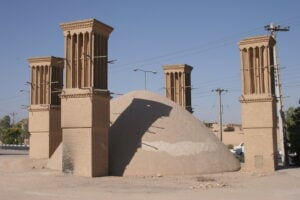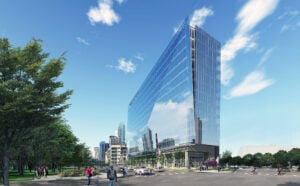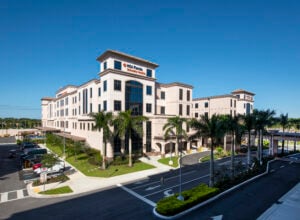Early Examples of Sustainability in Construction
Sustainability. Out of all the current buzzwords trending in construction today, it’s definitely one of the buzziest. Sustainability wasn’t a concern for most general contractors just a few decades ago. But today, thanks to the efforts of environmentalists and scientists who have helped make us aware of the powerful impact our work can have on the earth we live on, sustainability is frequently a significant consideration in many projects. Not only that but there is now an entire certification program—LEED—dedicated to encouraging both employers and employees in the construction industry to embrace eco-friendly building practices.
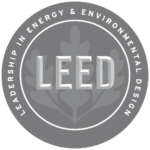 Because visibility around sustainable building and design practices has increased so dramatically in recent years, it’s very easy to fall under the perception that eco-friendly designs are a modern invention, something that wouldn’t have existed without the technology that we have now. But in reality, sustainable construction is a tradition that goes back centuries, even millennia if you study long enough. From the ancient cliff dwellings of the Pueblo people in the western United States to the mud huts that cover much of Latin America, many of the green practices that we consider innovative today are actually holdovers from our ancestors’ ingenuity.
Because visibility around sustainable building and design practices has increased so dramatically in recent years, it’s very easy to fall under the perception that eco-friendly designs are a modern invention, something that wouldn’t have existed without the technology that we have now. But in reality, sustainable construction is a tradition that goes back centuries, even millennia if you study long enough. From the ancient cliff dwellings of the Pueblo people in the western United States to the mud huts that cover much of Latin America, many of the green practices that we consider innovative today are actually holdovers from our ancestors’ ingenuity.
As shocking as it might be to find out that sustainability—albeit often in more primitive forms—has existed long before high-tech solar panels and window glass that tints on command, there are actually a lot of benefits to environmentally friendly designs that existed both then and now. For starters, there’s the cost reduction aspect. Sustainable designs don’t require as many resources, like water and energy, as “regular” buildings, saving significant amounts of time and money. Additionally, sustainable designs typically provide increased waste minimization, which aids in keeping the community environment healthy and clean, often adding aesthetic value too.
With these benefits in mind, let’s explore some of the earliest examples of green construction that were far ahead of its time.
The Salk Institute
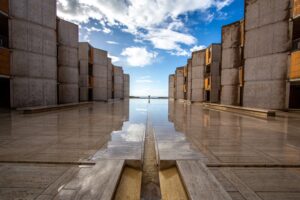 A 250,000-gallon cistern collects rainwater to feed the River of Life at the Salk Institute.
A 250,000-gallon cistern collects rainwater to feed the River of Life at the Salk Institute.
Though the Salk Institute is one of the newer examples on this list, it still deserves a spot because its architect—Louis Kahn—intentionally designed the building to draw from natural energy sources. His choices were so ahead of the environment that he was working in that the Salk Institute would have been LEED-certified about forty years before that program even came into existence.
The Salk Institute utilized underground cisterns to collect and reuse rainwater, and offices were cleverly built to siphon off the ocean breezes. Green roofing was also installed on top of the expansive building.
The Mesa Verde Cliff Dwellings
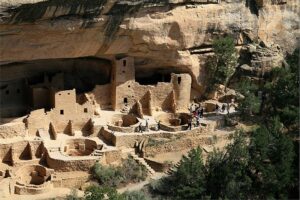 The Anasazi used what we now call passive solar cooling to keep their dwellings cool. (Photo courtesy of Andreas F. Borchert.)
The Anasazi used what we now call passive solar cooling to keep their dwellings cool. (Photo courtesy of Andreas F. Borchert.)You might have seen this one in person. Located in what is now Mesa Verde National Park in Colorado, the Mesa Verde cliff dwellings were occupied by an ancient indigenous people known as the Anasazi. These cliff dwellings took advantage of what we call passive solar cooling. Because the Anasazi built their homes just under a massive cliff overhang facing south, they were able to remain cool when the temperatures began to climb and warm when the temperatures inevitably dropped. Due to the overhang’s position towards the south, in the summer months, the overhang blocked the sun from reaching the dwellings and let them remain in the shade. In the winter, when the sun sat lower in the sky, the dwellings could absorb the heat of the sun and thus become warm even in the cold. Additionally, the thermal mass of the cliff helped facilitate the transfer of heat.
Thousands of years later, passive solar cooling designs are still used in many modern homes. Today’s passive solar homes must take into account factors like proper window orientation, thermal mass, and control strategies to ensure that all parts of the home are either warmed or cooled.
The Persian Windcatchers, or “Badgirs”
Perhaps one of the oldest examples on here is the ancient Persian “badgirs”—literally, wind catcher in the Persian language.
Simply put, windcatchers are exactly as the name states: tall towers that extend from roofs, taking cool breezes that pass through and funneling them down into the homes below. According to an article from the BBC, wind catchers can bring indoor temperatures down by at least ten degrees, and as a result, they have often been used to refrigerate perishables in underground storage rooms too.
More complex windcatchers can be hexagonal or octagonal and can also be put to use to block unwanted winds, especially those overloaded with dust from the surrounding desert. The more intricate windcatchers combine air pressure differentials, running water, and structural orientation to regulate temperatures that can fluctuate wildly from day-to-day, and have often been said to be just as good as electric-powered AC systems.
Though wind towers do not have quite as an exact modern equivalent as the Anasazi cliff dwellings, the concept behind them—passive ventilation—does continue today as a way to cut back on huge energy costs. Similar to passive cooling, passive ventilation makes use of doors, windows, and vents to circulate air throughout a home.
It’s incredible to think that what we often consider exciting or new today was handed down through centuries of ancient knowledge and practices. We hope that discovering the innovations of the past inspires you to be even more creative with the future.

-1.png?width=112&height=112&name=image%20(4)-1.png)












